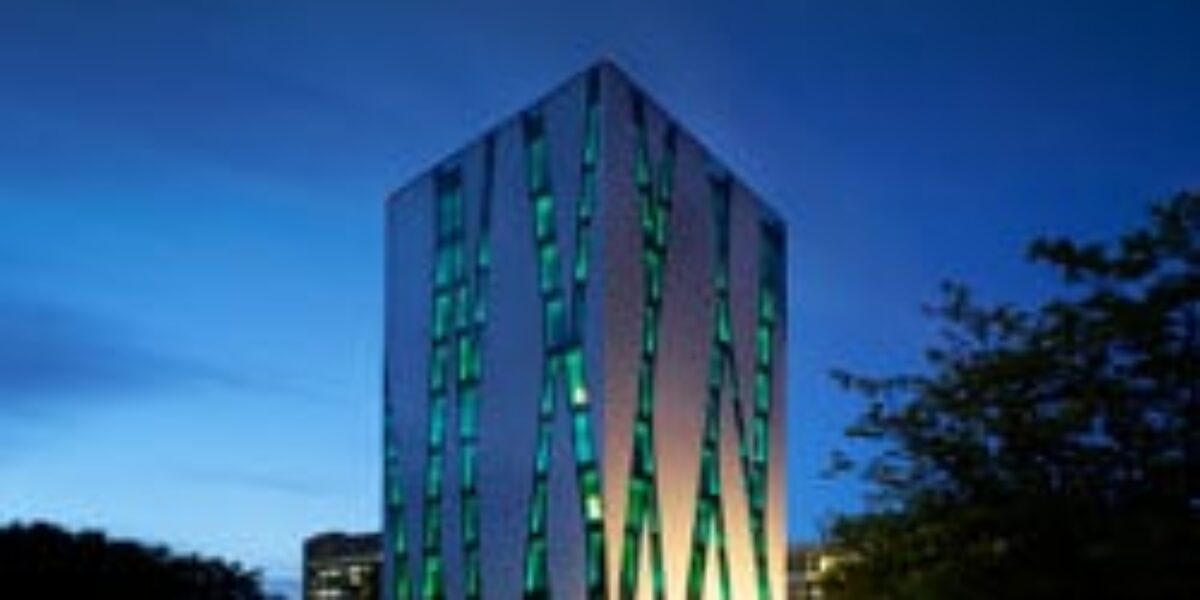HPP Architects – Learning from the Masters
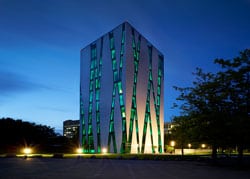
Architecture, it’s been said, reflects the society that surrounds it. Consider then, the new Medical Library Düsseldorf´s Heinrich-Heine-University. Known as the OASE building, it’s been described as being a “pulsating space for studying, reading, learning, inspiration and social encounter.” Enthusiastic, certainly – but it’s a pretty accurate way of putting it.
The building mirrors the prosperous confidence of North Rhine Westphalia’s capital city and the federal region as a whole, but it also succinctly captures the ambition and more importantly the social democratic values of this part of the world. NRW understands the important asset of its citizens and it celebrates and rewards them with good architecture.
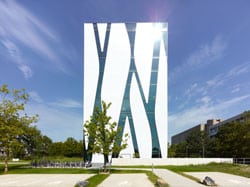
Designed by architects HPP, the project took two years from breaking ground to completion in November 2011. The design for the 38 meter high structure stack its various internal functions one on top of the other and is an architectural representation of our body’s capillary system. This idea is very effectively displayed through the smooth skin façade that forms a network of organic glass shapes over the slender cube. The cumulative effect is a vital building with high identification and recognition value.
HPP is one of Germany’s most successful architectural partnerships with an HQ overlooking the eventful angular splendour of Media Harbour in Dusseldorf. The company’s output maybe thrusting, conceptual, and modern, but the practice is rooted in tradition.
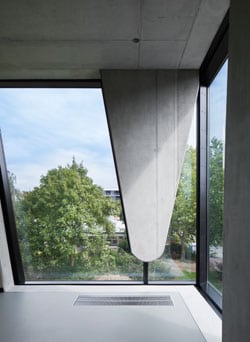
The company was formed 75 years ago by Helmut Hentrich and is currently led by the 4th generation of architects HPP Hentrich-Petschnigg & Partner GmbH + Co. With a staff of 260, and offices in Berlin, Frankfurt, Hamburg, Cologne, Leipzig, Stuttgart, Shanghai und Sofia, the HPP group is an international player in town planning, architecture and interior design.
HPP produce buildings of every size and type. The practice specialise in the design of office and administrative buildings, shopping centers, sports facilities, residential buildings, healthcare buildings, hotels, leisure and transport facilities.
Outside of Germany HPP focuses its efforts on urban planning and multi-purpose complexes and have found a huge demand for their services in master planning.
“As the design process becomes ever more complex, it is our conviction that sustainable solutions offering good, modern architecture can only be achieved through a generalist and multidisciplinary approach,” a company spokesperson says.

OASE has put HPP’s lofty ideas into practice: “The external appearance of the solid structure reflects the library’s specialist topic; it is the architectural expression of the capillary system. This dynamic is reflected in the interior design through the flowing open spatial structure.”
HPP has weathered the economic downturn well. The practice was quick out of the blocks in 2009 winning two competitions and completing two major projects, including the BayArena stadium for leading Bundesliga football team, Bayer 04 Leverkusen. HPP also completed Loop 5 in Weiterstadt. This distinctive 100,000sq m shopping centre is one of the largest shopping centres in Germany and showcases HPP’s talent for design and master planning.
Of course, the Oase Medical library is their latest triumph an a testament to both HPP and NRW’s commitment to good design even in the face of the financial crisis.
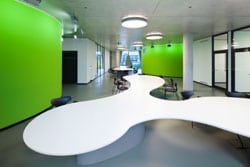
According to HPP’s mission statement, the building’s name evokes longing: “although the name Oasis is chiefly a play on words, the architecture demonstrates clear similarities with a fertile spot in the desert. Not through its form but through its concept; the brief was to design a space for enthusiastic learning; a place of exchange, of innovative teaching and learning and of development.”
The ground floor of the library has been designed as a double-height space with a suspended mezzanine floor. The mezzanine offers a conference space with a direct view onto the hustle and bustle of the café below through a glass wall. The specialist medical and dental library rooms along with study rooms of various sizes are organised on levels 1 to 4.
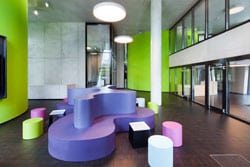
Digital whiteboards in the study rooms permit the most up-to-date interactive communication and data exchange. A specially fitted out parent-child study room is reinforces the user-friendly aspects of the concept. Learning lounges are arranged freely in the central zones of each floor reflecting the easy transition between geometric and organic forms in keeping with the architects’ intention to make this a library to be experienced and not just used.
In keeping with the concept as a whole, the areas become quieter and quieter as one moves upwards through the building and the atmosphere becomes ever more conducive to concentrated working.
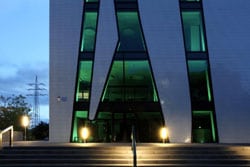
It is effectively a lighthouse project for innovative teaching and learning, the practice’s mission statement says. Which in these uncertain times is a noble undertaking and something we can all obtain something from.


